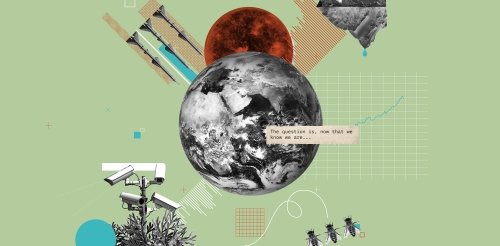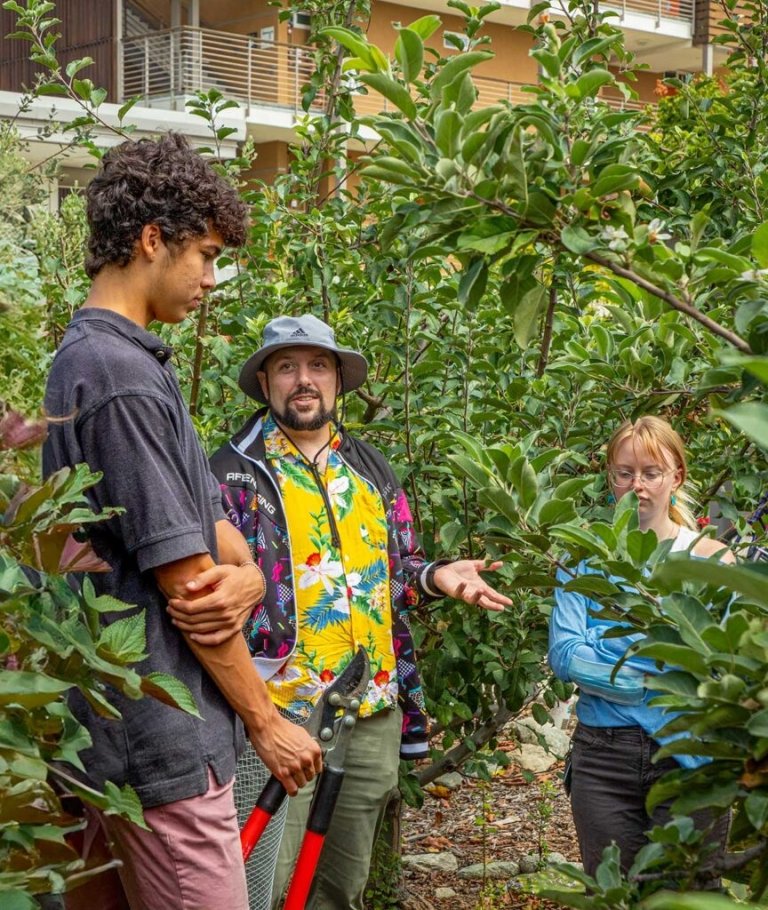Climate Optimism in Challenging Times
To prepare students to engage with environmental complexities, educators must help them find hope in the face of difficult future scenarios

by Arthur Levine ’14
Applied Research Fellow, Robert Redford Conservancy for Southern California Sustainability
In summer 2009, I was drawn to sunny Southern California because it was as far from my hometown of New York City as I could go for school and because of Pitzer’s beautiful campus and core values. I left behind a summer of activism and didn’t consider myself naive when I got to Pitzer—not after spending two years in racial and environmental justice work in the Gulf Coast and working with community gardens and urban farms in New York. But nothing could have prepared me for emerging from my dorm on my second day of college and seeing black skies, a red sun, and falling soot. I expected idyllic California skies, but I was greeted instead with the first of many wildfires I’d experience on the West Coast.
Fast-forward to 2023. I never expected to see images on the news of my hometown covered in orange-gray haze from wildfires burning in Canada. It didn’t seem possible that the smoky skies I’d experienced at Pitzer could ever happen there. Our planet is on fire. It’s not an overstatement to say that. There are relative pockets of safety and calm, but in reality, a socio-ecological crisis is surrounding us everywhere all at once.
Our students understand that. If only that was the sole thing they had to worry about. But today they’re confronted by so many issues: absurd U.S. politics, the explosion of surveillance capitalism, AI, and crushing student debt with relief that was stopped by the Supreme Court. That isn’t all: There are floods in Pakistan and heat domes in the Pacific Northwest; melting sea ice; the sixth mass extinction (which is being caused by human activity); wars raging in Yemen, Sudan, Ukraine, and Gaza; and hundreds of thousands of climate refugees fleeing drought and crop failure as emissions calculators and carbon concentration meters tick up.

An Uphill Battle
When I talk to Pitzer students now, it’s clear that being a socially responsible, critical thinker today can be overwhelming for them. It doesn’t surprise me.
And yet, sitting in my office at Pitzer’s Robert Redford Conservancy for Southern California Sustainability and watching the sage grow and listening to the bees hum and birds chirp, I feel a terrible cognitive dissonance. It’s something that I share with so many in The Claremont Colleges community. Life can be beautiful here. It grows slowly and regenerates. We are here in Claremont to share knowledge and plan for our future, but what awaits us beyond the safety of this moment? I’ve been working since I was in high school to create spaces for solution making, but sometimes it feels like an uphill battle.
Our students are not immune to this upsetting reality. They’re facing it in their own way in the Claremont bubble and challenging each other to do something about it. But the rich and powerful seem determined to drag us off a climate cliff regardless of our activism or our science.
I’ve had chances to talk with some students about things like the Millennium Ecosystem Assessment (2005), which proposes four future environmental scenarios that are possible for our world. These scenarios are Order from Strength, Global Orchestration, Adapting Mosaic, and Techno Garden. I tell them that it feels like we’re experiencing a perverse hybrid of all four in which nations spend more on militarism, border walls, and surveillance than on climate finance to maintain order; where global orchestration around big issues is facilitated by the United Nations yet co-opted by fossil fuel interests; where AI, renewable energy, and the Internet of Things are at once our best hope for solving complex problems and digging us deeper to the point of no return.
Adaptation is happening, but are we working together or simply vying for top position in a changing geopolitical landscape?
“The Redford Conservancy may be a small organization in the grand scheme, but we prepare students to avoid falling into this trap. … Through all our projects, we are showing them a pathway through despair to the future.”
–Arthur Levine ’14
A Thin Veneer of Safety
For anyone on campus, these big questions can seem far from the classrooms or the Grove House. Everything still seems OK here. And yet the veneer of safety and calm isn’t so thick that students can’t see past the citrus grove into a complex and challenging landscape. Even within our regional context, the same global patterns are being replicated. Our little corner of the world is in fact a node in a massive system of diesel emissions and globalized trade and distribution across webs of e-commerce. Students are at once activists pushing for change and consumers driving more mining, industrial processes, shipping, and ultimately the disposal of cheap goods.
We are all tied up in this system. The question is, now that we know we are, what will we do about it?

Southern California’s Inland Empire region, which extends from Claremont to Nevada, reflects the larger world. Our region has some of the most diverse populations and some of the worst air quality and living conditions in the U.S. It is also home to billionaires and infrastructure for Amazon and other Fortune 500 companies to make their profits. Warehouses and truck traffic dominate the soil, water, and air and push aside native plants, animals, and lands. The climate is heating, drought is increasing, and the population is growing, even though the region faces increasing vulnerability.
Small Steps Still Matter
Our students have avenues to get involved in transitioning to an ecologically sound society. As a member of the Redford Conservancy team and a broader member of the 5Cs community, I feel like this is my biggest contribution to them. When students feel cynical about the future and their contribution, they want to give up. That’s exactly where fossil fuel, big tech, and big pharma want them to be.
The Redford Conservancy may be a small organization in the grand scheme, but we prepare students to avoid falling into this trap. Our students learn to support communities on the front lines, confront harmful projects at the planning and advocacy level, expose corruption, write, document their work, generate and visualize data, and do meaningful scientific research and solution-building. Through all our projects, we are showing them a pathway through despair to the future.
If students feel that they can plug in and get to work making the world a better place, that is a victory. It matters. Reminding them how to do this is one of the most important victories we can strive for as educators.
Arthur Levine ’14 is an applied research fellow at Pitzer’s Robert Redford Conservancy for Southern California Sustainability. He has a Master of Science in Regenerative Studies, sits on the advisory boards of Riverside Food Systems Alliance and Agroecology Commons, and is a steering committee member for the Inland Southern California Climate Collaborative.